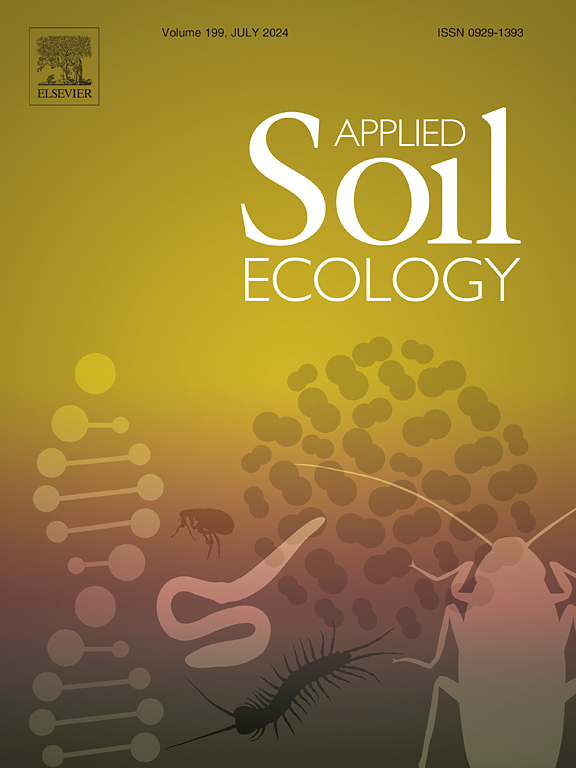Grazing exclusion changes the complexity and stability but not the α-diversity of the microbial community in a desert steppe
IF 4.8
2区 农林科学
Q1 SOIL SCIENCE
引用次数: 0
Abstract
Grazing exclusion (GE), to achieve ecological restoration, has a significant impact on plant community features and soil physicochemical qualities, including soil fertility. Whereas, the responses of soil microbial diversity, complexity, and stability to GE in a water-limited desert steppe remain poorly understood. GE of different durations (14 and 20 years) was implemented in a desert steppe of central Inner Mongolia in this study. Changes in soil physicochemical properties and chemical stoichiometry were observed with increasing restoration time, accompanied by variations in the composition of the microbial community. GE did not alter α-diversity, but it did change the microbial community structure and composition, with significant differences between those in the topsoil and subsoil. A symbiotic network analysis revealed a gradual increase in the complexity of soil bacterial and fungal networks with the increasing GE duration, and that the rate of change was greater in the bacterial than in the fungal community, with greater changes in the latter in the subsoil than in the topsoil. There was no significant change in the stability of the bacterial network under GE whereas the stability of the surface fungal network increased and then decreased, and the underlying stability increased significantly. The Zi-Pi plots and CCA (Canonical Correlation Analysis) analysis revealed important roles for the bacterial phyla Actinobacteriota, Proteobacteria, and Chloroflexi as well as for the fungal phyla Ascomycota, Mortierellomycota, and Basidiomycota in the response of the soil to environmental variations. Available nitrogen and the carbon to nitrogen ratio were the environmental determinants to affect the structure of topsoil fungal community (P < 0.05). As for the subsoil, available phosphorus and above-ground biomass were the environmental determinants to affect its structure (P < 0.05; P < 0.01). Our findings highlighted the critical role of ecosystem restoration duration in shaping soil microbial community in water-stressed steppes. Specifically, the duration significantly influenced the complexity and stability of these community. Furthermore, the community exhibited differential adaptive responses to environmental changes.
求助全文
约1分钟内获得全文
求助全文
来源期刊

Applied Soil Ecology
农林科学-土壤科学
CiteScore
9.70
自引率
4.20%
发文量
363
审稿时长
5.3 months
期刊介绍:
Applied Soil Ecology addresses the role of soil organisms and their interactions in relation to: sustainability and productivity, nutrient cycling and other soil processes, the maintenance of soil functions, the impact of human activities on soil ecosystems and bio(techno)logical control of soil-inhabiting pests, diseases and weeds.
 求助内容:
求助内容: 应助结果提醒方式:
应助结果提醒方式:


